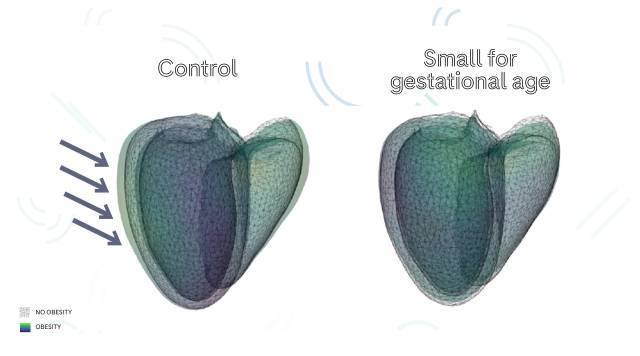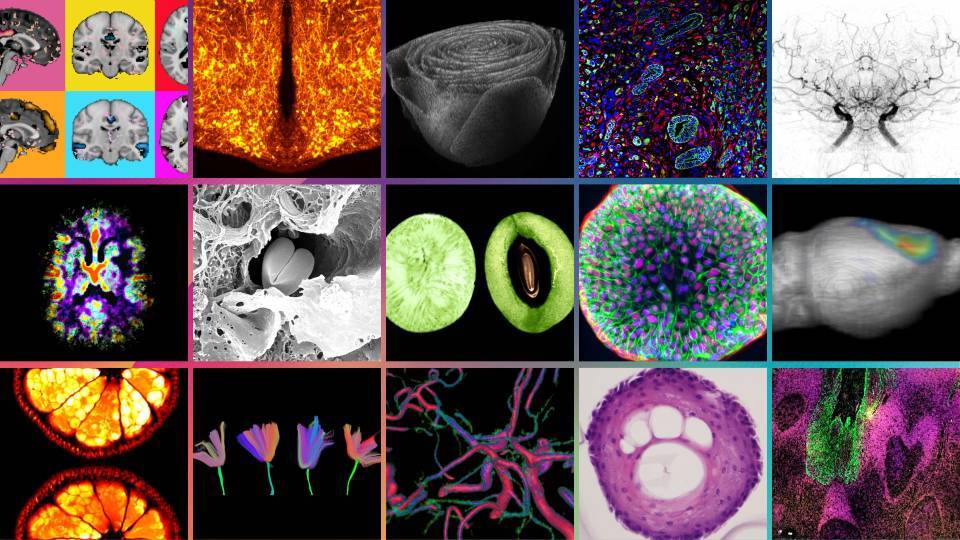Thus, in people born small for gestational age who become obese in adulthood, the heart exhibits an atypical response. It is unable to increase its muscle mass or size, in order to pump the blood, and therefore it functions less effectively.
The study was published in the European Heart Journal - Cardiovascular Imaging and was coordinated by Dr. Fàtima Crispi, senior specialist doctor in the BCNatal Maternal and Fetal Medicine Service of the Hospital Clínic and the Hospital Sant Joan de Déu, and researcher in the IDIBAPS Fetal and Perinatal Medicine research group. The study was carried out with the collaboration of the University of Lyon and the Pompeu Fabra University, and received funding from the “la Caixa” Foundation and the Jesús Serra Foundation.
People with a low birth weight, who represent 10% of all births, have more cardiovascular problems in adulthood. For example, they are up to three times more likely to have a myocardial infarction and are also at higher risk of hypertension, stroke, diabetes and metabolic syndrome.
A previous study by the same team and published in the journal JAMA Cardiology described cardiac changes in adults with a low birth weight. It was seen that they present differences in the structure and functioning of their heart and have less capacity for physical exercise than other people when they are adults. However, the mechanism that causes these hearts to be more susceptible remains unclear.
Moreover, it is known that obesity is a cardiovascular risk factor that overloads the heart, since when a person is obese their heart has to work harder, as it has to pump the blood over a larger surface area.
The effect of obesity in a person with a low birth weight
A new study has looked at the reaction of the heart of adult with a low birth weight who is obese in adulthood, in order to understand how two cardiovascular risk factors interact in these people.
For the study, the data from a cohort of 155 adults were used. Half of them had a low birth weight and the other half normal fetal growth, and they had undergone cardiac magnetic resonance imaging (cohort created for the study published in JAMA Cardiology).
The researchers analysed the interaction between the birth weight and the degree of central obesity (measured via the waist-hip ratio) using a complex heart structure analysis method (statistical shape analysis).
The adults with a low birth weight had an atypical response to obesity. In a person with normal fetal growth, when they become obese their heart has to work harder and pump more blood. In order to do this, it undergoes hypertrophy; in other words it gains muscle mass and becomes larger (it dilates).
However, in people with a low birth weight, there is no capacity for increasing the heart’s mass or size, which means that their heart functions less effectively and their capacity for exercise also decreases. “This means that their heart is too small and needs to increase its beat frequency disproportionately in order to maintain its performance”, explains Fàtima Crispi.

These results show that obesity increases cardiovascular risk in people with a low birth weight and highlights the importance of promoting preventive measures to encourage a healthy lifestyle in this population. “Given that low birth weight is present in 10% of births, more studies are required to find out how the heart remodels itself in response to other risk factors and to define preventive strategies to increase these people's cardiovascular health”, concludes Fàtima Crispi.
Study reference:
Association of central obesity with unique cardiac remodelling in young adults born Small for Gestational Age
Gabriel Bernardino, Álvaro Sepúlveda-Martínez, Mérida Rodríguez-López, Susanna Prat-Gonzalez, Carolina Pajuelo, Rosario J Perea, Maria T Caralt, Francesca Crovetto, Miguel Angel Gonzalez Ballester, Marta Sitges, Bart Bijnens, Fatima Crispi.
European Heart Journal - Cardiovascular Imaging, 2023; jeac262, https://doi.org/10.1093/ehjci/jeac262




